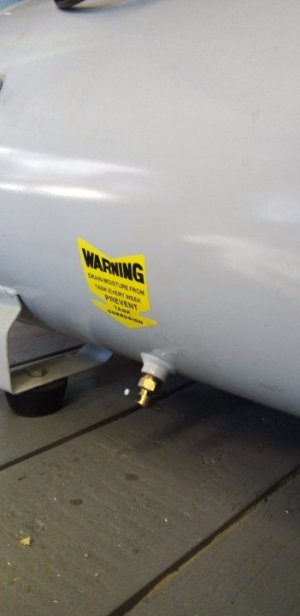- Joined
- Sep 29, 2017
- Messages
- 2,258
I recently bought a new compressor (50L Ryobi dorect drive),but fixed my old one anyway,but I do have a problem with the drain that I don't like nor understand why they did it like this. It sits a bit offset from the bottom,it is convenient to get to, but I am worried on how efficient it can drain water because of the offset.
Any thoughts on why the company would do it like this? I don't see how I can do anyething about this. I will post a pic tommorow.
Michael
Any thoughts on why the company would do it like this? I don't see how I can do anyething about this. I will post a pic tommorow.
Michael


